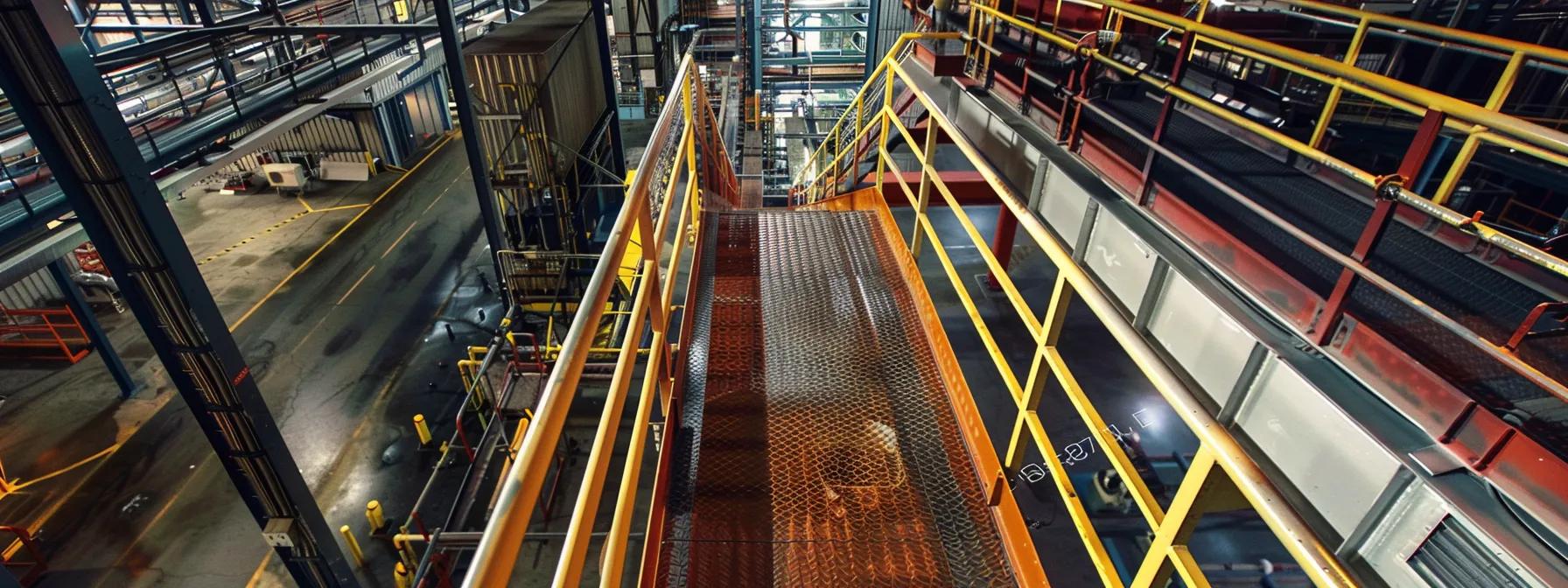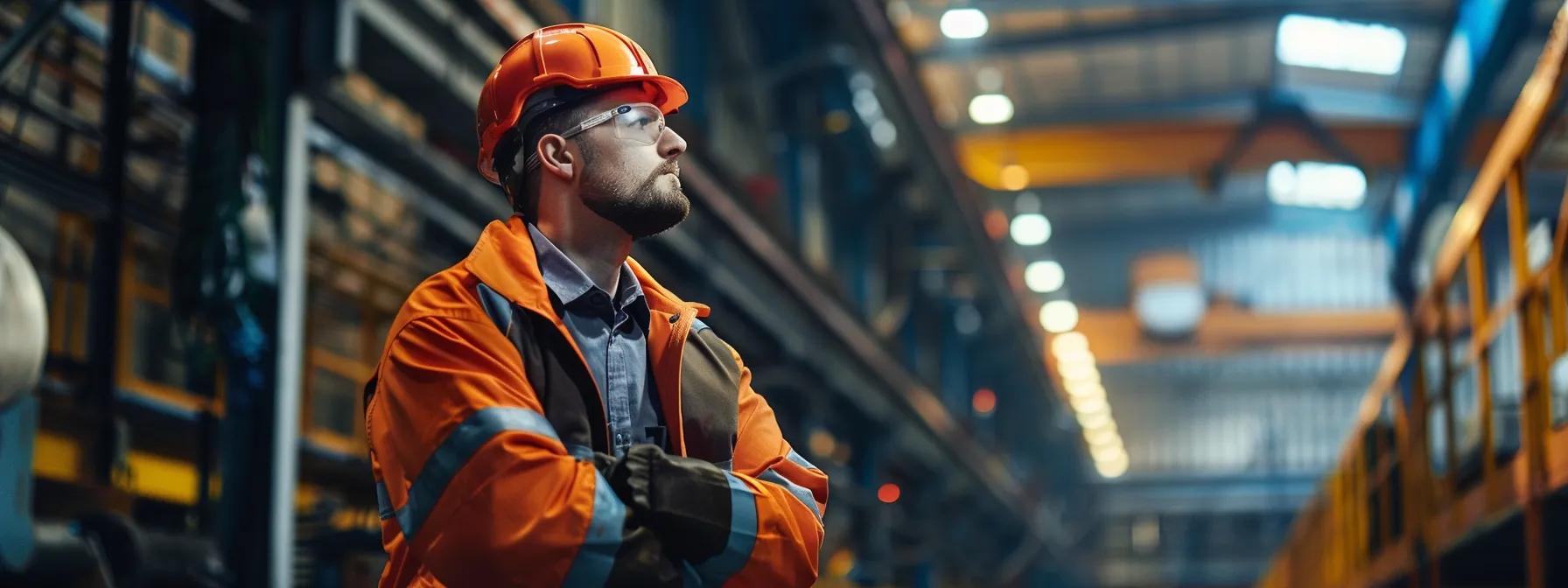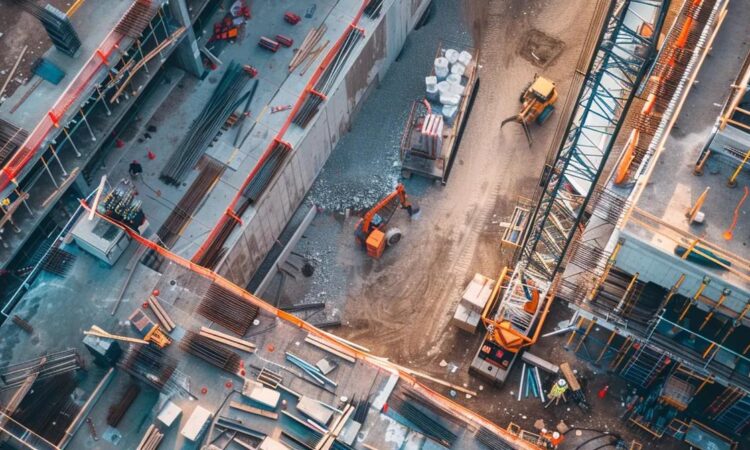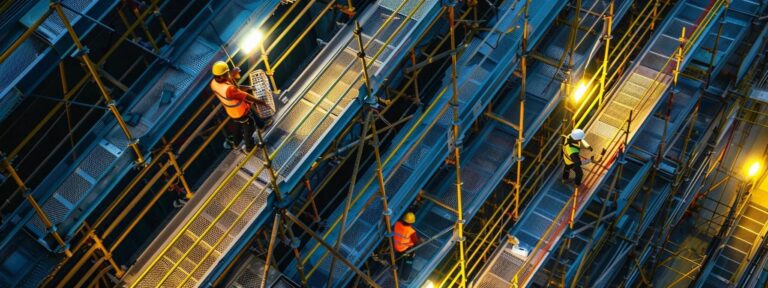Fall Protection Anchors Explained: A Key to Safe Walkways and Work Zones
Understanding Core Concepts of Fall Protection Anchors
Fall protection anchors are essential safety components used in work zones to secure personnel against falls. In many industries-we-serve environments, these anchors are not only designed to secure workers but are also integrated into comprehensive safety systems. They serve as fixed points for fall arrest systems—such as lifeline-systems, lanyards, or harnesses—to absorb fall energy and safely halt a worker. Often, additional measures like guardrail systems and ladder systems are implemented, with careful design installation protocols and regular annual-maintenance routines ensuring continuous protection. This approach reduces injury risk by limiting fall distance and force. For further details, please visit our about-us page and check out our Anchor text: blog to get-a-free-quote on reliable usfallprotection solutions.
Defining Fall Protection Anchors and Their Function in Safety
Fall protection anchors are engineered components embedded or attached to structures. They provide secure connection points for fall arrest equipment and are designed to withstand high forces generated during a fall. Examples include anchor bolts in concrete and welded anchor plates on steel structures. This measure is critical for meeting occupational safety regulations and protecting workers during elevated tasks.
The Mechanics Behind How Fall Arrest Anchors Operate
These anchors work by transferring the force from a falling worker’s harness through a flexible lanyard or energy absorber. This energy-absorbing system spreads forces over a longer time, reducing the peak load on the body. Properly installed anchors can limit deceleration forces to less than 6 kN in ideal conditions, ensuring that the human body tolerates the impact.
Recognizing Forces on Fall Protection Anchor Points
During a fall, forces can reach several thousand newtons depending on fall distance and system configuration. Engineers calculate forces based on dynamic loads, friction in energy absorbers, and body mass. Regulatory standards from OSHA and ANSI require anchors to support at least 5 kN, although many systems are built to handle higher loads to ensure an adequate safety margin.
Regulatory Frameworks for Fall Protection Anchors
Agencies such as OSHA, ANSI, and ISEA set guidelines for fall protection anchors. These regulations include testing methods, load requirements, and installation procedures. Regular inspections and recertification ensure that the anchors maintain their integrity. Compliance is both a legal requirement and a best practice for reducing fall-related incidents.
Distinguishing Fall Arrest Anchors From Fall Restraint Anchors
Fall arrest anchors are designed to stop a fall once it starts, while fall restraint systems prevent workers from reaching hazardous areas. Although both share similar components, fall arrest systems need greater energy absorption and stricter load-bearing tests compared to fall restraint systems.
Exploring Various Types of Fall Protection Anchors

There are several types of fall protection anchors, each suited to different work environments and construction materials. The choice depends on the work zone, structure type, and specific safety requirements.
Permanent Fall Protection Anchor Solutions
Permanent anchors are engineered into a structure during construction or rehabilitation. Examples include embedded anchor bolts or welded plates on beams. They are common in industrial facilities, commercial construction sites, and permanent elevated workspaces. Their fixed nature means they are always available, reducing the need for repeated installations and enhancing long-term safety and cost efficiency.
Temporary and Portable Fall Protection Anchor Options
Temporary anchors offer flexibility by being movable as work conditions change. Options include tripods, beam clamps, and portable anchor kits. Such systems are ideal for renovation projects or temporary scaffolds where ease of setup and adaptability are important. Although they offer comparable safety to permanent systems, they require more frequent load testing and certification.
Specifics of Concrete Substrate Fall Protection Anchors
Designed for masonry and concrete, these anchors are embedded using chemical adhesives or expansion mechanisms. Commonly used in building construction and bridge projects, these anchors must be carefully installed to avoid weakening the substrate. Supplemental reinforcement, such as rebar, is often added for increased load-bearing capacity.
Steel Structure Fall Protection Anchor Points
In steel structures, anchors may be welded or bolted directly to steel members. Their inherent strength allows them to handle very high loads, making them popular in industrial settings and commercial buildings. Proper weld sizes or bolted connections with locknuts help ensure their long-term security.
Specialized Anchors for Roofing Applications
Roof anchors face unique challenges including dynamic loads and harsh weather. They are often integrated into the roof system through standing seams or modular safety devices. These anchors balance secure attachment with minimal intrusion to avoid compromising the roofing membrane. Using corrosion-resistant materials like stainless steel or coated alloys is common to ensure durability under outdoor conditions.
Implementing Overhead Fall Protection Systems Securely
Overhead fall protection systems are designed for workers operating under suspended loads or on overhead platforms. These systems face additional challenges from vertical forces and dynamic movements compared to ground-level systems.
Key Components of Overhead Fall Protection Systems
An overhead system includes anchorage points, lifelines or cables, energy absorbers, and connectors. Each part is vital: lifelines must support a worker’s weight, and energy absorbers must decelerate a fall gradually. Systems are rigorously tested to simulate real-life fall conditions and ensure reliable performance under high loads.
Selecting Suitable Anchors for Overhead Applications
Choosing anchors for overhead work requires evaluating overhead structures, weight distribution, and potential impact forces. Options include welded steel points, embedded concrete anchors, or specialized clamps. Selections are based on engineering judgments, load requirements, and environmental factors such as exposure and vibration.
Design Principles for Overhead Fall Protection System Configurations
Effective designs incorporate redundancy, optimized load distribution, and minimal deflection. Redundancy offers backup support if a component fails, while multiple anchorage points distribute loads evenly. Minimal deflection reduces collision risk with overhead obstacles. Engineers use dynamic load tests and simulations to balance safety with functionality.
Advantages of Rigid Rail Overhead Fall Protection
Rigid rail systems provide a fixed track for worker movement, ideal in tasks requiring precision and minimal movement. These systems offer enhanced stability, superior load distribution, and seamless integration with other safety protocols. Studies indicate that rigid rails can reduce fall arrest distances by up to 30% compared to flexible cable systems.
Applications of Cable-Based Overhead Fall Protection Systems
Cable-based systems use high-tensile strength cables running between fixed anchors, with trolley systems enabling safe worker movement. They are used in construction, maintenance, and open-space work environments. Designers account for cable tension, sag, and environmental factors like wind, while regular inspections and adjustments ensure ongoing optimal performance.
Ensuring Walkway Safety Systems With Correct Anchors

Walkway safety systems use fall protection anchors to secure guardrails, lifelines, and access platforms. They protect workers navigating elevated walkways and prevent falls at critical locations.
The Role of Anchors in Comprehensive Walkway Safety Systems
Anchors provide the foundation for guardrails and lifelines by securely attaching them to the structure. Their proper installation ensures that personal fall arrest systems function effectively, even when dynamic forces or unexpected shifts occur. Well-engineered systems can reduce fall-related injuries significantly.
Integrating Fall Protection Anchors With Elevated Walkways
Integrating anchors involves careful evaluation of the walkway’s material, environmental conditions, and high-stress points. Anchors are installed at regular intervals to create a continuous protective system along the walkway, ensuring safe passage for workers.
Horizontal Lifeline Anchors for Continuous Walkway Protection
Horizontal lifeline anchors run along the entire walkway, allowing workers to remain attached while moving. Dual-anchor configurations enhance load sharing and reduce failure risks. Installation according to regulatory standards is essential for improved protection.
Anchor Considerations for Rooftop Walkway Systems
Roofs present challenges like weather exposure, thermal expansion, and building movement. Rooftop anchors must be corrosion-resistant and maintain grip under variable temperatures. Their placement is critical to avoid interference with drainage systems or other utilities, confirmed through comprehensive load testing.
Securing Access Points With Appropriate Fall Protection Anchors
Access points including stairwells, ladders, and doorways require dedicated anchor systems. These anchors secure guardrails or lifeline systems at transitional areas, offering controlled passage and acting as visual cues for potential hazards.
Installation and Certification Procedures for Fall Protection Anchors
Proper installation and certification are crucial for ensuring the safety and reliability of fall protection anchors. The process is technical and must be performed by qualified professionals following strict manufacturer guidelines and regulatory standards.
Proper Installation Methods for Different Fall Protection Anchors
Installation methods vary by substrate—chemical adhesives and mechanical expansion devices are used in concrete, while welding or bolting is common in steel structures. Correct installation ensures that anchors maintain their rated load capacity under stress conditions.
The Necessity of Qualified Installers for Anchor Systems
Only qualified and certified personnel should install anchors. Their expertise ensures proper assessment of the substrate, appropriate anchor selection, and precise installation. Training and certification programs help reduce the risk of errors that could compromise system integrity.
Load Testing Requirements for Fall Protection Anchors
Load testing validates an anchor’s ability to handle fall forces. Tests are performed with calibrated equipment under strict protocols, often requiring loads well above the rated capacity. Regular load testing, as mandated by regulations, documents an anchor’s performance for future inspections.
Documentation and Certification Standards for Anchors
Comprehensive documentation is required for installation practices, load test results, and maintenance history. Certification details such as the anchor’s rating, installation date, and inspector verification are crucial for compliance audits and future reference.
Common Installation Errors for Fall Protection Anchors
Errors such as inadequate substrate preparation, misaligned components, and insufficient embedment depth can compromise an anchor’s performance. Common mistakes include not cleaning the concrete properly or using incompatible materials. Adherence to manufacturer guidelines and proper training are essential to minimize these errors.
Maintaining and Inspecting Fall Protection Anchors for Continued Safety

Routine maintenance and regular inspections ensure that fall protection anchors remain reliable over time. A well-planned inspection regimen helps detect wear, corrosion, or damage early, preventing potential hazards and costly repairs.
Establishing an Inspection Regimen for Fall Protection Anchors
A systematic inspection routine should include visual checks, non-destructive tests, and periodic load tests. Inspections are conducted by qualified professionals and documented thoroughly, with intervals adjusted based on environmental and usage factors.
Identifying Wear, Damage, or Corrosion in Anchor Systems
Anchors can show signs of wear through cracks, corrosion on metal parts, or deformation. Early detection is key to preventing serious safety issues. Detailed inspection reports should recommend repairs or replacements as needed.
Recertification Processes for Aging Fall Protection Anchors
As anchors age, recertification reassesses their load-bearing capacity using standardized tests. Certified inspectors verify whether repairs or replacements are necessary, ensuring that the anchors continue to meet safety requirements.
Best Practices for Upkeep of Fall Protection Anchor Points
Maintaining anchors involves regular cleaning, inspection, and recertification. Protecting metal components with coatings and replacing temporary fixes with permanent solutions are best practices. Ongoing staff training on basic inspections also contributes to early problem detection and overall site safety.
How Anchor Integrity Affects Overall Work Zone Security
The effectiveness of a fall protection system depends on anchor integrity. Well-maintained anchors instill confidence in fall arrest systems, while compromised anchors can lead to catastrophic failures. Consistent monitoring and regular maintenance are essential for maintaining work zone security.
Table of Fall Protection Anchors and Their Attributes
Before discussing maintenance practices further, consider the following table summarizing key attributes of common fall protection anchors:
| Anchor Type | Substrate/Material | Load Capacity (kN) | Typical Application | Recommended Maintenance Interval |
|---|---|---|---|---|
| Embedded Concrete Anchor | Concrete with rebar | 10-15 | Building construction, bridges | Quarterly |
| Welded Steel Anchor | Structural steel | 15-25 | Industrial facilities, steel buildings | Quarterly |
| Portable/Temporary Anchor | Composite/Aluminum | 5-10 | Temporary scaffolding, renovation | Monthly |
| Roof Anchor for Standing Seam | Stainless steel | 10-20 | Roofing applications | Bi-annually |
| Horizontal Lifeline Anchor | Bolted or welded steel | 15-20 | Elevated walkways, overhead systems | Quarterly |
This table aids in selecting the appropriate anchor based on environmental conditions, capacity needs, and specific applications, while emphasizing the importance of regular maintenance.
Frequently Asked Questions
Q: What is a fall protection anchor?
A: It is an engineered safety component that serves as a secure attachment point for fall arrest systems, ensuring that workers are safely halted in a fall.
Q: How do fall arrest anchors work?
A: They transfer the force of a fall to a robust anchorage point using energy absorbers and load-distribution mechanisms to minimize impact on the worker.
Q: What are the differences between fall arrest and fall restraint systems?
A: Fall arrest systems are meant to stop a fall in progress, whereas fall restraint systems prevent workers from reaching a fall hazard. Their design requirements and load capacities differ accordingly.
Q: Why is proper installation of fall protection anchors important?
A: Correct installation ensures that anchors can withstand the designated forces during a fall, reducing failure risk and ensuring worker safety. Qualified installers and regular load tests are essential.
Q: How often should fall protection anchors be inspected?
A: Inspections should occur regularly—typically monthly to quarterly—depending on usage and environmental conditions, with detailed load testing and recertification as required.
Q: What materials are fall protection anchors typically made from?
A: They are commonly made from stainless steel, structural steel, and composite materials, chosen based on required corrosion resistance and load capacity.
Q: Can temporary anchors be as effective as permanent ones?
A: Yes, when properly installed and maintained, temporary anchors can provide safety comparable to permanent systems, though they require more frequent inspections.
Q: What regulatory bodies oversee fall protection anchor standards?
A: OSHA, ANSI, and the International Safety Equipment Association (ISEA) set guidelines for testing, installation, and maintenance of fall protection anchors.
Q: How do environmental factors affect anchor performance?
A: Weather, corrosion, and substrate movement can significantly impact performance, making regular maintenance and proper material selection critical.
Final Thoughts
Fall protection anchors are the cornerstone of worker safety in elevated environments. Their proper selection, installation, maintenance, and certification ensure that fall arrest and restraint systems perform as designed. Whether using permanent embedded systems or flexible temporary setups, each anchor type is tailored to meet specific structural challenges and work conditions. Adhering to regulatory standards and conducting regular inspections and load tests are essential practices that safeguard lives and enhance overall work zone security. Continued innovation in anchor materials and installation methods will further improve safety outcomes in industries where working at height is a daily requirement.




